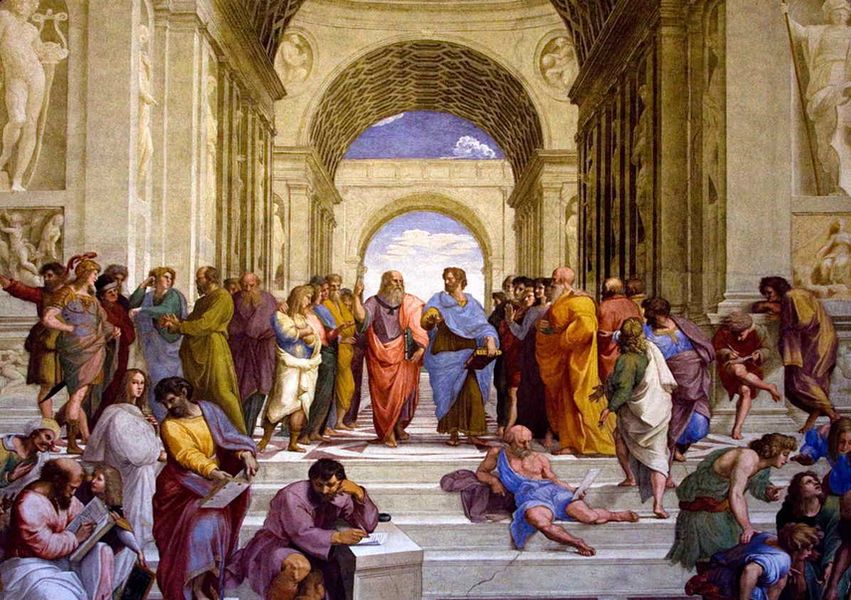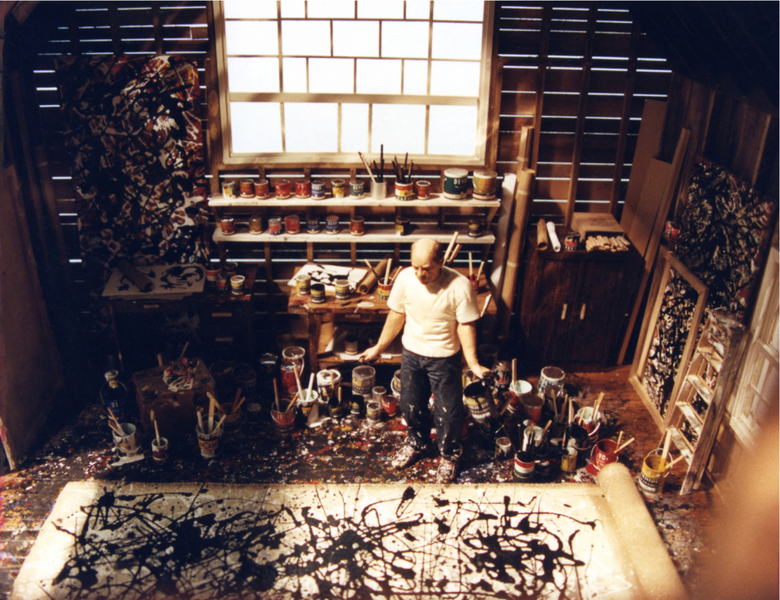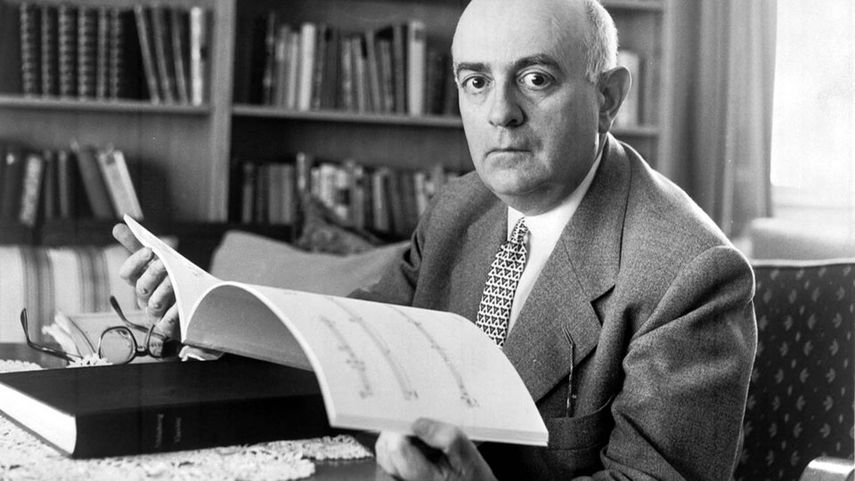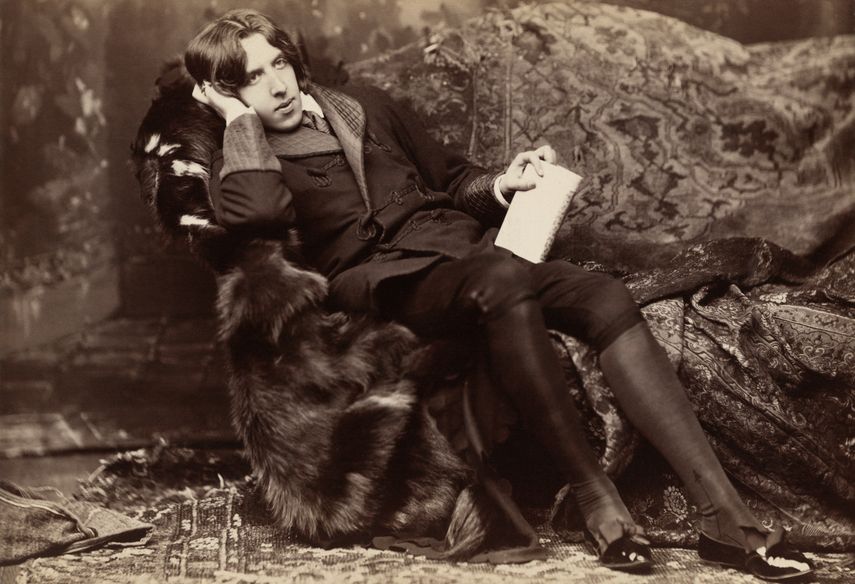This Is Not History but Art That Expresses the Real Life
What is art? The question that has been troubling the humanity for centuries. The nature of fine art has been described by philosopher Richard Wollheim equally 'ane of the well-nigh elusive of the traditional problems of human civilisation'. The definition of fine art is open up, subjective and debatable. Throughout the history of art, artists themselves have been pushing the boundaries of each definition and challenging our preconceptions. As the concept of art has been changing through centuries, its purpose has been defined as to stand for reality, communicate emotions or ideas, create a sense of beauty, explore the nature of perception, explore formal elements for their own sake, or but being nonexistent. The function of fine art has been changing over time, acquiring more of an artful component here and a socio-educational function there. There is no agreement between philosophers, art historians and artists, and thus, we are left with so many definitions.
Since the ascension of the advanced, Western tradition has been evolving to the betoken where anything tin be presented equally an fine art object, and where the role of the artist is bailiwick to multiple interpretations. In 1981, the German-born American art historian Peter Selz wrote: 'If one general statement tin exist fabricated about the art of our times, it is that one past one the quondam criteria of what a work of art ought to be accept been discarded in favor of a dynamic approach in which everything is possible'.

Art Every bit Mimesis
The thought of art as an imitation, that dominated throughout centuries of fine art history, dates back to aboriginal Greece. Plato didn't wait as well fondly on art. Regarding all art forms as instances of 'mimesis' or false, he criticized them for failing to describe the eternal ideal realities that he referred to as 'forms' or 'ideas'. Since life itself was just a mere and poor copy of perfect ideal forms, the fine art every bit a re-create of a copy was merely a third removal from the reality and truth. Similarly, Aristotle traces fine art back to the love of fake and recognizing likenesses which characterizes humans. But for him, art was not mere copying. As a realization in the external class of a truthful idea, art idealizes nature and completes its faults seeking to grasp the universal type in the individual phenomenon. 'The aim of art is to represent non the outward appearance of things, but their inwards significance', Aristotle wrote.The theory of fine art as an fake of beauty or nature was persistent throughout the history of art. In Lives of the Painters Renaissance painter and fine art historian Giorgio Vasari wrote 'painting is only the fake of all the living things of nature with their colors and designs just as they are in nature'. It wasn't until the commencement of the 19th century and the rise of Romanticism that this idea started to fade away and much greater emphasis was placed on the expression of the artist's emotions.

Art As a Grade of Expression
Born out of Romanticism, the expression theory of art defined it as the means of portraying the unique and private emotions of artists. Tolstoy'south definition of art in his slice What Is Art? was very much out of this mould: 'Fine art is a human being activity, consisting in this, that one person consciously, by certain external signs, conveys to others feelings he has experienced, and other people are affected by these feelings and alive them over in themselves'. Argued that expression theory restricts artists to the expression of feelings and emotions, subsequently theorists emphasized that fine art tin limited not only feelings and emotion but as well ideas. In 'Sentences of Conceptual Art' in Art and Its Significance, American artist Sol Le Witt stated: ' Ideas alone tin be works of fine art….All ideas need not be made concrete.…A piece of work of art may exist understood as a conductor from the creative person's mind to the viewer's. But it may never attain the viewer, or information technology may never get out the artist'due south mind'.
As a way of expressing emotions and ideas, art is also a powerful means of communication. Making an affect on the sensory perceptions of others, a work of art should arguably communicate artist's emotions or feeling. Centuries before the expression theory, Leonardo da Vinci stated that 'art is the Queen of all sciences communicating knowledge to all generations of the world'. In the to a higher place-mentioned piece, Tolstoy wrote: 'To evoke in oneself a feeling one has experienced, and…so, past means of movements, lines, colors, sounds or forms expressed in words, then to transmit that feeling—this is the activeness of art'.

Art and The Truth
Thinkers influenced by Martin Heidegger have interpreted art every bit the means by which a community develops for itself a medium for self-expression and interpretation. For Heidegger, art either manifests, articulates or reconfigures the style of a civilization from within the earth of that culture. In this sense, art is capable of revealing someone else'southward world and producing a shared understanding. Much earlier Heidegger, Hegel thought fine art expresses the spirit of item cultures, every bit well as that of individual artists and the general human spirit. Putting an emphasis on the historical development of ideas and of consciousness, he saw an artistic expression as a kind of a climax of the history of the human spirit that reveals the truth in an intuitive way.
Art oft revolves around the search for truth and meaning in one's life. But can a piece of work of art produce the truth? While Plato thought information technology cannot, Hegel and another thinkers idea differently. The notion of truth in art is not a thing of accurate representation in an empirical way, simply fine art can express a deeper sense of reality and convey certain noesis. In Fire and Ice: The Fine art and Thoughts of Robert Frost , the American poet Robert Frost wrote: ' To me the affair that fine art does for life is to clean it – to strip it to course'. Similarly, Pablo Picasso thought that 'art is a prevarication that makes u.s.a. realize the truth, at to the lowest degree the truth that is given usa to empathise'. Since artists and their audience share the material earth in which they alive, art can contribute to the change of that world and the full general sensibilities and attitudes. Every bit Paul Klee wrote in The Inward Vision, 'fine art does not reproduce the visible; rather, it makes visible'.

Fine art Shaping The World
Speaking in Marxist terms, art can be understood as a part of the superstructure or equally part of the material ground. Or in other words, information technology can be understood as an credo or as technology. Art equally an ideology contributes to the reproduction of the current social conditions, while the fine art in the material footing seeks to modify them. Encouraging individuals to think exterior the limits to which their thoughts are regulated by the systems of power, art serves to eradicate the 'demystification' present in backer society. The writings of Marx and Engels on art were both limited and significant, merely other Marxist theorists continued to develop the Marxist theory of fine art. For Adorno, politically engaged art is a partial corrective to the bankrupt aestheticism of the majority of mainstream art. As he wrote, 'all art is an uncommitted crime', meaning that art challenges the status quo by its very nature and engages with an already existing credo and dominant discourse. Thus, art should be critical and should interrogate the world, rather than seek to explain it, or every bit Brecht wrote: 'Fine art is not a mirror held upwardly to reality but a hammer with which to shape it'.

And then, What Is Art?
Whatever art is, it is inherent to human existence. Dostoevsky wrote: 'Art is equally much a need for humanity as eating and drinking. The need for beauty and for creations that embody it is inseparable from humanity and without it man perhaps might not want to alive on world. Man thirsts for dazzler, finds and accepts beauty without any conditions simply only as it is, but because it is beauty; and he bows downwards earlier information technology with reverence without request what use it is and what one can purchase with it'. For Nietzsche, 'art is essentially the affirmation, the blessing, and the deification of existence'. Art is a means of coping with the world we alive in, our own beingness and making sense of it all. American novelist Saul Bellow wrote that 'art has something to practice with the accomplishment of stillness in the midst of chaos'. On the other mitt, for Oscar Wilde, 'art is the most intense mode of individualism that the world has known'. Art is also an effort at immortality, or every bit French novelist Andre Malraux wrote, 'art is a revolt, a protest against extinction'. Fine art is all those things and so many others. Transcending a solipsistic view of life, art has the power to chronicle to the earth and each other with more than integrity, more curiosity, more wholeheartedness. And past doing so, information technology makes our lives infinitely rich.
Source: https://www.widewalls.ch/magazine/what-is-art
0 Response to "This Is Not History but Art That Expresses the Real Life"
Postar um comentário